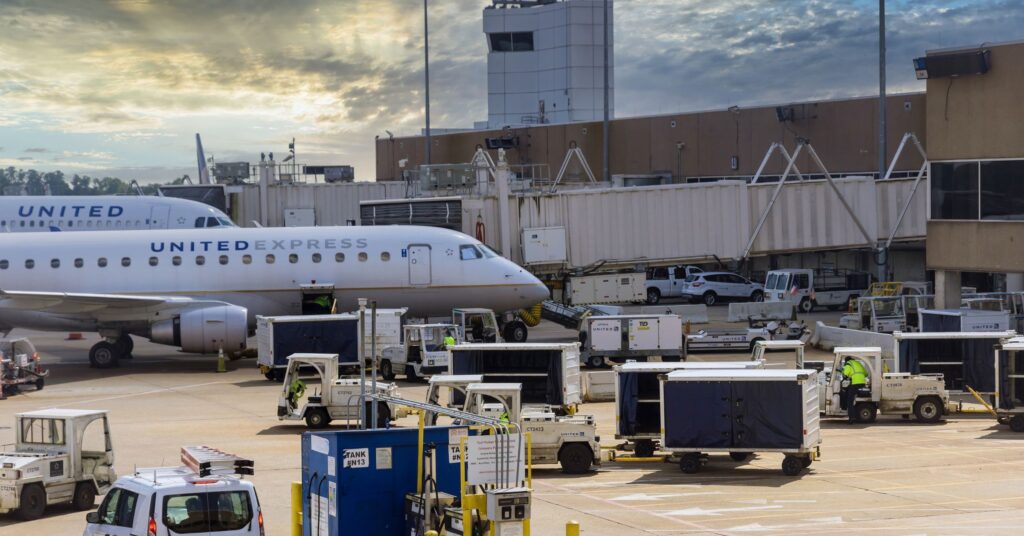Table of Contents
You know that old saying, right? The one about how ‘bad news travels fast’? It’s a cliché because it’s true, and this truth also applies to the role of crisis communication in public relations.
Crisis communication management isn’t just about being quick on your feet, it’s about being precise, being transparent, and, above all, being in control of your own story before it gets away from you and becomes something else entirely.
But why does this matter? Why should we care?
First, there’s your brand’s reputation. It’s something you’ve worked tirelessly to build, and it can be smeared in a matter of minutes. A well-executed crisis communication strategy can help soften the blow and preserve the image you’ve worked so hard to cultivate.
Then, there’s trust. In the midst of a crisis, your stakeholders are looking for reassurance. They want to know that you’ve got things under control. Good communication can help maintain that trust, even when the ground is shifting under your feet.
And let’s not forget about transparency. In a crisis, rumors can spread like wildfire, distorting the truth and causing unnecessary panic. By keeping the lines of communication open, you can help ensure that the conversation remains grounded in fact, not fiction.
Did you know that 85% of employees are more likely to stick around during hard times if their company maintains an open line of communication?
The right crisis communication strategy can be the difference between a minor stumble and a full-blown disaster. So, how do you navigate all of this? Let’s find out.

Types of Crises: Are You Prepared for the Unexpected?
Crises can pop up in the most unexpected places, turning your organization upside down. The first step towards preparedness is understanding the types of crises that could potentially disrupt your company’s narrative.
- Natural Disasters: These are crises caused by the unpredictable forces of nature, such as earthquakes, hurricanes, floods, wildfires, or pandemics. They require quick response and clear communication for safety and reduced damage.
- Technological Crises: These are crises that occur due to technological failures or malfunctions. Power outages, data breaches, software failures – all are technological glitches that can pause your operations.
- Confrontation Crises: These crises occur when disagreements escalate to a point where they disrupt operations. They can involve a range of characters, from employees to customers or other stakeholders.
- Crisis of Malevolence: This type of crisis involves an entity seeking to harm an organization or its stakeholders. Examples include terrorism, sabotage, or workplace violence.
- Organizational Misdeeds: These crises occur when leaders in the organization take actions knowing the harm they could cause – such as fraud, deception, or illegal activities.
- Workplace Violence: This type of crisis involves any act or threat of physical violence, harassment, intimidation, or other disruptive behavior that occurs at the work site.
- Rumors: These crises are born from the spread of false information about an organization, its products, or its stakeholders, causing confusion.
- Financial Crises: These crises hit when an organization faces severe financial loss, bankruptcy, or other monetary issues that could impact its operations or reputation
What is Crisis Communications Management?
Crisis communications management is the behind-the-scenes orchestration that kicks into gear when unexpected events threaten to cast a shadow over a company’s reputation. But it’s not just about damage control—it’s about maintaining the trust and credibility that your audience has invested in you.
Effective crisis communications management is multifaceted. It involves recognizing the problem, owning up when necessary, and communicating with a transparency and timeliness that keeps your audience in the loop.

Handling Crisis Communications
The most important tip when handling any sort of crisis is to remain calm, plan and lead your team well.
- Prepare: Always have a crisis communication plan ready. This should outline who communicates, what they say, and through what channels.
- Be Transparent: Honesty is the best policy. Share what you know and admit what you don’t. Avoid speculation.
- Respond Quickly: Time is of the essence. Respond quickly to control the narrative.
- Listen: Feedback is a gift. Listen to your stakeholders and address their concerns. This shows you value them.
Crisis Communications Plan: Do You Have One in Place?
Crisis communication is all about steering the narrative and expertly handling the aftermath. What would you do if your brand is suddenly thrust into the spotlight, but not for the reasons you’d hoped? Maybe it’s a product recall, a legal dispute, or a social media scandal. Whatever the crisis, you need a plan to ensure your brand’s reputation stays clean.
“Failing to plan is planning to fail.” – Benjamin Franklin
Developing a crisis communication plan is not as scary as it might seem.
The typical steps of creating a crisis communication plan:
- Analyze potential crises: First, identify what kind of crises might affect your business. This could range from financial troubles to PR disasters.
- Identify key stakeholders: Who needs to know about the crisis? This can include employees, clients, shareholders, and the media.
- Develop messaging: For each potential crisis, develop a template with key messages that address the issue and demonstrate that your company is commited to resolving it.
- Establish a communication chain: Determine who will communicate what, when, and how during a crisis.
- Test your plan: Run simulations to test how effectively your communication plan works in a crisis situation.
Ultimately, all companies can face crises. A crisis communication plan helps your company with responding swiftly and clearly, owning up to mistakes where applicable and showing that your brand adheres to its principles and stakeholders.
Dos and Don’ts of Crisis Communication
Some tips to help brands survive difficult periods are universal.
DOs
- Be Proactive: Don’t wait for the crisis to hit before you react. Develop a crisis communication plan and ensure everyone in your team knows their role.
- Be Transparent: Honesty will hold your brand’s reputation firmly in place. Acknowledge the situation and be clear about the steps you’re taking to address it.
- Be Timely: Prompt communication can mitigate negative impacts. Quick updates can prevent audience guesswork and rumors.
DON’Ts
- Don’t Hide: Ignoring a crisis won’t make it disappear – avoidance can damage your brand’s reputation more than the crisis itself.
- Don’t Spread Uncertainty: Unclear messages can lead to misinformation and panic. Make sure your communication is clear, concise, and based on facts.
- Don’t Neglect Internal Communication: Your employees are your brand’s ambassadors. Keeping them in the loop is as important as informing the public.
Crisis communication isn’t just about damage control – it’s about taking a stand, showing responsibility, and leading with empathy. With these basic do’s and don’ts in mind, your brand can navigate any crisis with grace and resilience.
70% of consumers have boycotted a brand because of its stance on a social or political issue.
Crisis Communication Case Studies
There is no better way to understand the importance of crisis communication than by examining real-life scenarios. Companies that have faced crises head-on and those that have faltered provide invaluable examples to learn from. Let’s journey through some notable crisis communication case studies together.
Starbucks Racial Bias Training
In 2018, Starbucks found itself at the center of a PR storm. The arrest of two African American men in a Philadelphia store, after requesting to use the restroom without making a purchase, sparked widespread criticism.
Soon after the incident, Starbucks declared that all their 8,000+ locations across the United States would suspend operations for a day to facilitate a large-scale anti-bias training. This training, planned for May 29, was designed for the company’s impressive workforce of 175,000 employees.

Kevin R. Johnson, the CEO of Starbucks, took time alongside his executive team to intimately connect with the Philadelphia community. They were there to gain a deep understanding of the missteps made by the company. He pledged to change Starbucks’ procedures to prevent such incidents from happening again.
The incident had a significant impact on Starbucks’ reputation as a socially responsible company. The decision to close all domestic stores for training was seen as a move that went beyond the typical crisis response.
This case provides us with several lessons:
- Swift Response: The company immediately acknowledged the incident, apologized, and outlined steps to prevent an occurrence like this in the future. Quick response in crisis communication can shape the story.
- Transparency: Starbucks was open about the incident and its plans to address it.
- Taking Responsibility: Starbucks took full responsibility for the incident. The CEO personally apologized and pledged to make changes.
- Action Beyond Apologies: Starbucks went beyond just issuing an apology. They took concrete action by closing their stores for a day to conduct anti-bias training. This demonstrated their commitment to change and helped restore their reputation.
- Involvement of Leadership: The involvement of the CEO in the crisis response showed that the company was taking the issue seriously. It also helped to humanize the company and showed empathy towards the victims.
- Long-term Commitment: The incident led to a long-term commitment to anti-bias training, showing that Starbucks was committed to making lasting changes, and wasn’t just interested in a quick fix.
- Stakeholder Engagement: Starbucks engaged with various stakeholders, including civil rights groups, in developing their response. This helped ensure that their actions were informed and effective.
United Airlines Passenger Removal
In 2017, United Airlines faced a crisis when a passenger, Dr. David Dao, was forcibly removed from an overbooked flight, an the incident was caught on video. Global backlash occurred, with threats of airline boycotts and calls for an investigation.
United’s initial response to the crisis was, to put it mildly, a study in how not to handle crisis communication. The company’s first statement was tone-deaf, with CEO Oscar Munoz apologizing for having to “re-accommodate” the passengers. The internet, with its knack for irony, quickly turned this into a joke. A few hours later, United seemed to double down on its mistakes by circulating a letter in which Munoz appeared to blame Dr. Dao for defying the officers.
It wasn’t until Tuesday afternoon, after more than a day of changing statements and mounting public pressure, that United finally seemed to grasp the gravity of the situation. Munoz issued a statement saying that United would take “full responsibility” for the situation. However, as Jeremy Robinson-Leon, a principal at the corporate public relations firm Group Gordon, pointed out, the “back-against-the-wall, through-gritted-teeth apology” didn’t exactly inspire confidence.

In the aftermath of the crisis, United pledged to review its overbooking policies. But the damage to the company’s reputation was already done. The incident serves as a stark reminder of the importance of timely, sincere, and transparent crisis communication. It’s a lesson that other companies would do well to learn from.
BP Oil Spill
Back in 2010, the Deepwater Horizon oil spill, commonly referred to as the BP oil spill, illustrated the catastrophic effects a crisis can have on both the environment and a company’s financial stability. This disastrous event resulted in 4.9 million barrels of oil pouring into the Gulf of Mexico, causing an unfathomable environmental catastrophe.
Environmental Impact:
- Marine Life: The oil spill significantly impacted numerous species of marine life, resulting in a drastic reduction in their population.
- Ecosystem: The spill disrupted the Gulf’s delicate ecosystem, causing damage that experts predict may take many decades to fully recover.
- Beaches and Wetlands: Many beaches and wetlands were polluted, impacting local flora and fauna, and even causing coastal erosion.

There were a lot of communication failures. Engineers in Houston were kept in the dark about the goings-on on the rig, and the rig workers were similarly uninformed about the concerns in Houston. It’s a classic case of the left hand not knowing what the right hand is doing, with disastrous consequences.
In the aftermath of the spill, several months after, BP pledged to review its practices. But the damage was done. The company’s reputation was tarnished, and the Gulf of Mexico was left to grapple with the environmental fallout.
In the end, BP’s cost-cutting measures proved to be a false economy. The company ended up paying billions in fines and cleanup costs, not to mention the incalculable cost to its reputation. It’s a sobering reminder that in business, as in life, you often get what you pay for. And sometimes, the cost is far higher than you could ever imagine.
Johnson & Johnson Tylenol Murders
The crisis erupted in 1982, when seven people died after consuming cyanide-laced Tylenol capsules.
Johnson & Johnson displayed exceptional readiness in their crisis response, demonstrating both speed and precise decision-making. Without hesitation, they warned consumers to refrain from using aany Tylenol product until the severity of the tampering was fully assessed. The company made the decision to withdraw all Tylenol capsules from not only Chicago and its surroundings, but also nationwide, as soon as the discovery of more adulterated bottles was made. Despite this move costing millions, it underscored the company’s commitment to prioritize public safety above all else.
The company also used the media to communicate their strategy during the crisis. They established a 1-800 hotline for consumers and a toll-free line for news organizations to receive daily updates. They held major press conferences and used live television feeds to ensure their message reached the widest possible audience.
Despite their best efforts, Johnson & Johnson’s approach to crisis management didn’t quite hit the mark. The initial signals of the crisis were brought to their attention not through internal channels, but via a Chicago-based news reporter. Their response ads, though swift, came under fire for their overly polished and almost promotional quality.
With a strong commitment to ensuring customer safety, the company implemented tamper-resistant packaging and random inspection procedures. This proactive approach was designed to forestall any repeat of the past crisis. In an exemplary display of compassion and responsibility, the company offered counseling and financial aid to the families affected by the incident, despite not being responsible for the product tampering.
COVID-19 and Cruise Ships
The cruise ship industry, a floating testament to human indulgence, encountered an unexpected yet unavoidable crisis in early 2020. The COVID-19 pandemic swept through these havens of relaxation, transforming them into hotspots of contagion. The industry’s response, or rather the lack thereof, is a masterclass in crisis miscommunication.
The cruise ship Grand Princess transformed an emblem of the sector’s shortcomings in maintaining timely crisis communications. The vessel, carrying 3,533 people, was left adrift, both in a physical and conceptual sense. The passengers, trapped in a floating limbo, were left in the dark, their pleas for information met with silence or worse, misinformation.

The cruise ship industry’s response was a cocktail of denial, deflection, and delay. The industry seemed to be operating under the misguided belief that silence is golden. But in crisis communication, silence isn’t golden; it’s deadly. It breeds fear, fuels rumors, and erodes trust.
The industry’s failure to communicate effectively during the crisis is a stark reminder of the importance of transparency, empathy, and timeliness in crisis communication. It’s a lesson in what not to do. In the face of a crisis, silence is not a strategy; it’s a death knell.




